PMI Chapter of Mauritius PMI Workshop — Decarbonising the construction industry
On Thursday 27th March 2025, the Project Management Institute Chapter of Mauritius held a workshop at Moka Mocha in Tribeca Mall. The theme was "the importance of decarbonising the construction industry in Mauritius".
The workshop was scheduled at 18h30. It started sharp at that time as the room was already full with attendees. I barely understand terms about the construction industry but the whole point of joining the PMI Chapter and going to these meetups and workshops, is to learn through the experience of industry professionals of different fields, rather than staying within the IT bubble.
The topic was akin to what we (IT professionals) address as sustainable IT. After all, the end goal remains the same; that is, to reduce the environmental impact and leave minimal carbon footprint.
As usual for the PMI events, we were greeted by the chapter president.
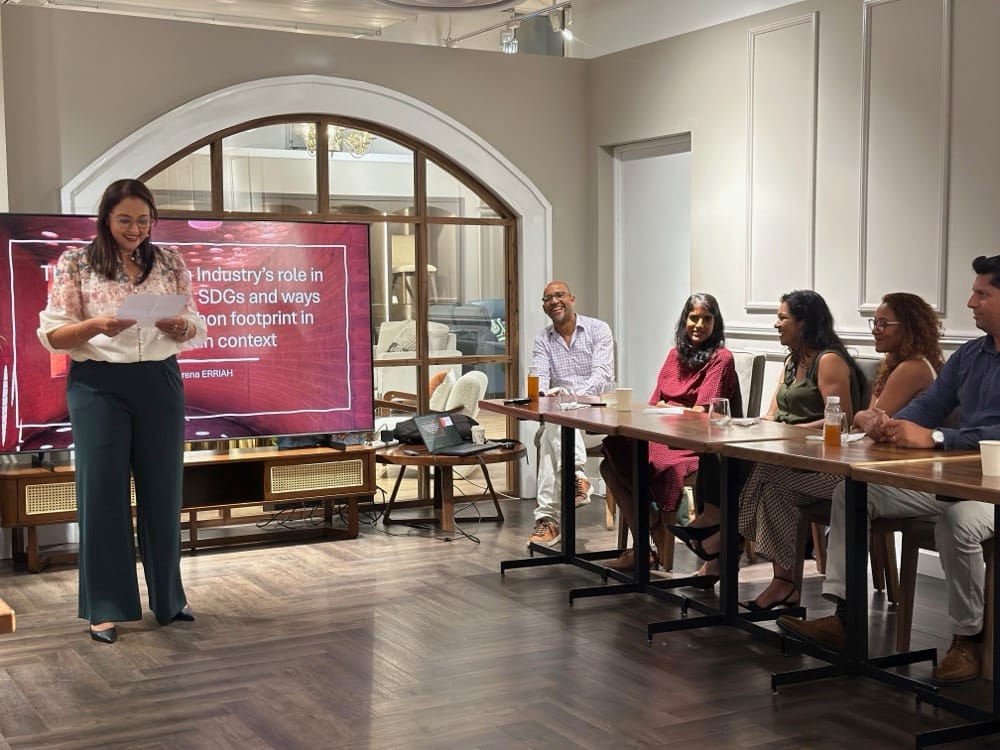
Two speakers were scheduled to co-present. The first part of the presentation was done by Laurena Erriah.
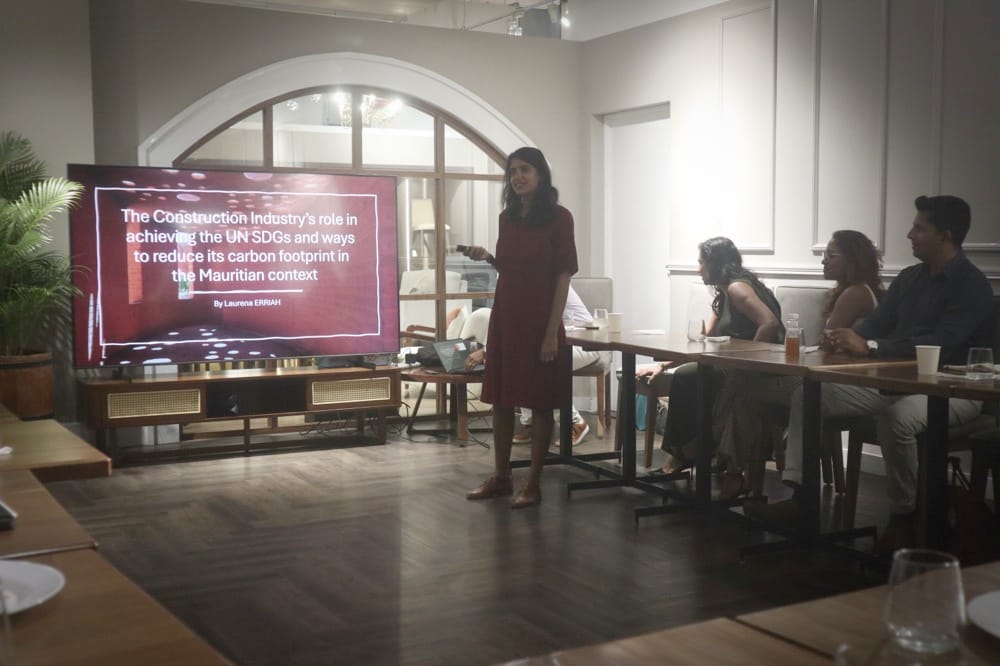
Laurena explained the meaning of sustainability in the construction industry. She gave us an overview of the Sustainable Development Goals (SDGs) defined by the United Nations. There are 17 goals that the UN aims to achieve by 2030. Each of the goals is further broken down into specific targets, totalling 169 targets. Every four years, a Global Sustainable Development Report is published — the most recent one is that of 2023. Data is collected by national statistical institutions in each participating country and the data is analysed through a global indicator framework. The result of this work culminates into the final report.
Laurena emphasised on the the importance of the SDG knowledge for real-estate developers and architects. She also talked about the Kyoto Protocol and COP 21, highlighting that Mauritius updated its Nationally Determined Contributions (NDCs) in 2021, which included targets to reduce greenhouse gas emissions and the transition to renewable energy sources.
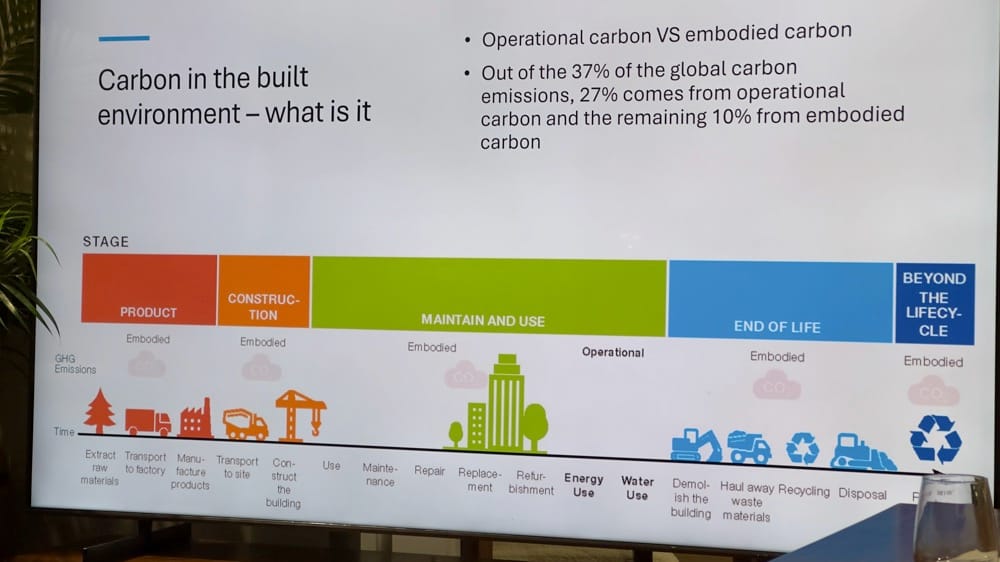
We learned about carbon emissions caused by the production of construction materials, the carbon emissions caused during construction, during the maintenance of a building, and finally while demolishing a building. Carbon emissions can be estimated across the lifecycle of buildings and best practices are put in place for real-estate developers to minimise the emissions.
The key takeaways for most of us, who were the non-construction related people, at the workshop, was when Laurena explained that 60% of heat in a building can be reduced just by proper isolation of the ceiling — meaning less dependence on air conditioning. She also spoke about buildings that are designed from ground up to allow air circulation across the building, citing the example of the extension of the Réunion Island airport.
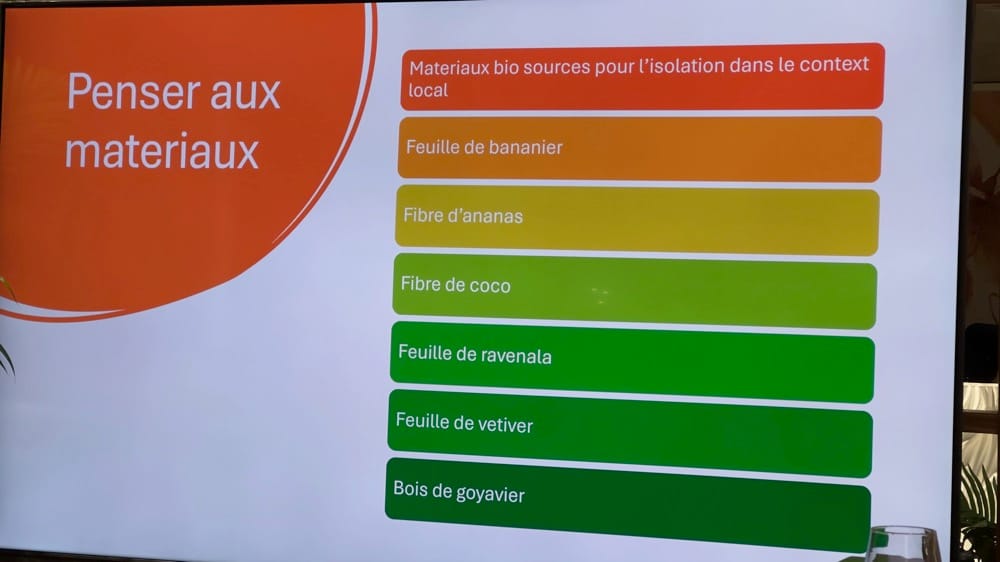
Laurena also gave examples of buildings built in Mauritius that did not require a connection to the Central Electricity Board (CEB) or the Central Water Authority (CWA).
The second part of the presentation was done by Rishta Rajiah, QHSE & Sustainability Manager at Kolos Cement Ltd. She is a certified Lead Auditor for ISO 9001, ISO 14001, ISO 45001 and ISO 27001, and currently serves on the board of the Green Building Council Mauritius.

Rishta talked about the carbon emissions caused by the production of construction materials, especially the grinding process to produce cement. These are not done in Mauritius, as cement is imported.
She presented a case study by Kolos Cement Ltd, whereby the company has put on the local market different types of cement that contains additives to reduce the carbon emissions.
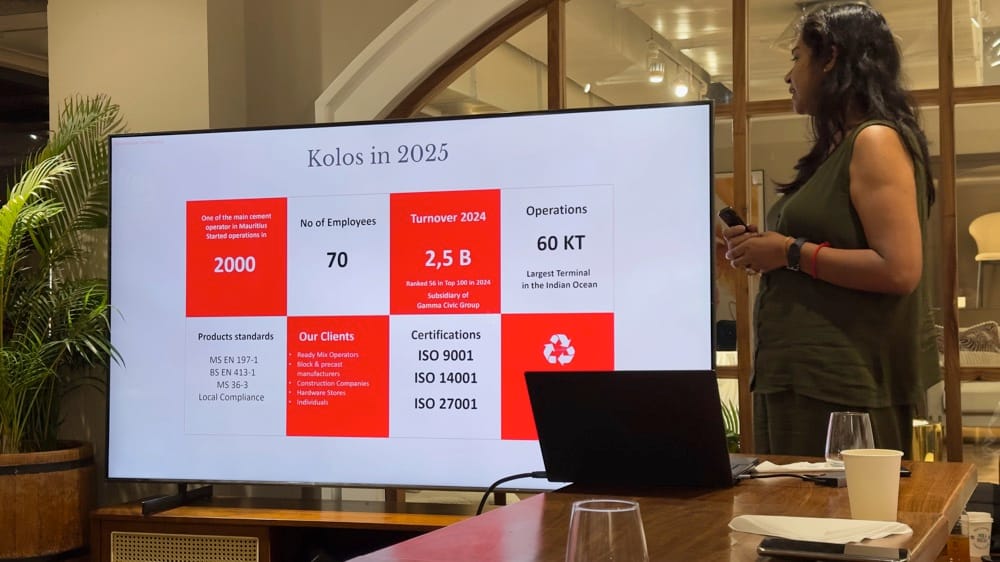
Rishta explained the technicalities of cement, explaining that CEM I (Ordinary Portland Cement) contains 100% cement whereas CEM II (Portland Composite Cement) contains supplementary materials that help reduce the carbon emissions. Kolos imports CEM II and provides four variants of cements (depending on the different additives) on the local market. These variants are suited for different types of construction works. Through these variants of cements, that produce less carbon than what CEM I would have, Kolos Cement Ltd contributes to overall reduction of carbon emissions in construction.

It was a good workshop where I learned a few things about the construction industry. I did my mental comparison of sustainability in the construction industry versus the IT industry. As I mentioned in the beginning, we have similar goals, they are just executed differently.
